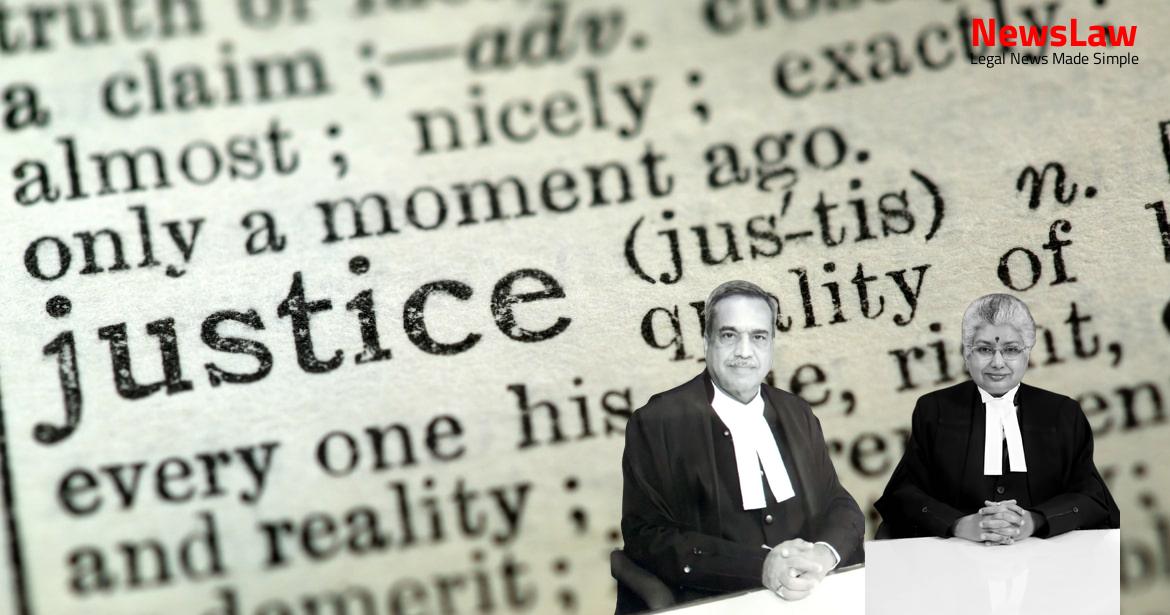In a recent landmark decision, the Supreme Court of India rendered its judgment in Criminal Appeal No. 1167 of 2018, a case that stirred considerable attention and legal debate. The appeal, brought forth by Ballu @ Balram @ Balmukund and another appellant against the State of Madhya Pradesh, challenged the verdict of the High Court, which had overturned their acquittal by a trial court. The appellants were initially acquitted of charges under Sections 302, 201, and 34 of the Indian Penal Code (IPC), but the High Court convicted them based on an appeal filed by the prosecution. This judgment analysis delves into the intricate details of the case, the legal arguments presented by both sides, and the critical considerations leading to the Supreme Court’s decision to acquit the appellants, thereby reverting the earlier judgment of conviction. Let’s delve deeper into the complexities of this case and understand the legal nuances underlying the Supreme Court’s pivotal verdict.
Facts
- Beni Prasad admitted there was a crowd of around 150 people at the time of panchnama of the dead body.
- Trial judge found Beni Prasad’s behavior of not informing about the dead body being dragged away as unnatural.
- High Court reversed the findings of the trial judge on this matter.
- Prosecution relied on the evidence of Raju, Dharmendra Singh, and Govind to establish the accused being last seen with the deceased Mahesh Sahu.
- Nails were cut six days after the incident.
- During the panchnama of the dead body, Beni Prasad did not name the killers, explaining that the police did not ask him.
- The deceased Mahesh Sahu was in a love relation with Anita, daughter of Jamna Bai and sister of appellant No.1.
- Anita and Mahesh Sahu resided in Agra for approximately eight months before returning to Damoh.
- Govind (PW-7) witnessed appellant No.1 dragging a dead body from his house, indicating the involvement of the appellants in causing the death of the deceased.
- After the incident, the parents of the deceased, Beni Prasad and Sumitra Bai, arrived at the scene.
- Anita eventually got married to someone else.
- The trial concluded with the acquittal of the accused due to lack of proof beyond a reasonable doubt.
- An FIR (Exh. P-1) was registered at Police Station, Damoh based on the oral report of Beni Prasad (PW-1).
- The investigation led to the filing of a chargesheet in the Court of Judicial Magistrate First Class.
- Sumitra Bai (PW-6) mentioned the relationship between Mahesh Sahu and Anita.
- Appellant No.1 was observed by Govind (PW-7) dragging a dead body from the house, while appellant No.2 was seen washing blood stains at the door of their house.
Issue
- The main issue at hand is whether the prosecution has proven the case beyond a reasonable doubt.
- The key question is whether the appellants can be considered guilty of committing the crime in question.
Also Read: Ravinder Kumar vs. State – Legal Case Summary
Arguments
- The petitioner argues that the present case is based on circumstantial evidence.
- The prosecution must prove the chain of circumstances beyond a reasonable doubt for a conviction.
- In appeals from acquittals, the scope of interference is limited.
- The High Court is criticized for reversing a well-reasoned judgment of acquittal.
- The trial Judge had detailed reasoning for finding the prosecution’s case not proven beyond reasonable doubt.
- Interference with trial Judge’s findings is not permissible unless shown to be perverse or impossible.
- The High Court allegedly interfered with the trial Judge’s findings in a cursory manner.
- The prosecution relies on circumstantial evidence in this case.
- The Supreme Court refers to the judgment in Sharad Birdhichand Sarda v. State of Maharashtra to establish the law on conviction based on circumstantial evidence.
- Citing the case of Hanumant v. State of Madhya Pradesh, the Court emphasizes the need for circumstantial evidence to be fully established and consistent only with the guilt of the accused.
- The evidence presented by Beni Prasad (PW-1) and Sumitra Bai (PW-6), along with medical evidence, is argued to conclusively prove the case beyond reasonable doubt.
- The importance of circumstances being conclusive and excluding alternative hypotheses is highlighted as per legal precedent.
Also Read: Divgi Metal Wares Ltd vs. Divgi Metal Wares Employees Association
Analysis
- Conditions that must be fulfilled before a case against an accused can be fully established.
- Importance of fully establishing circumstances and excluding all other possible hypotheses.
- Requirement for a complete and conclusive chain of evidence.
- Limitation of strong suspicion in place of proof beyond reasonable doubt.
- Necessity for interference with a finding of acquittal to be based on perversity.
- Judicial consideration of substantial justice and avoiding miscarriage of justice in appeals against acquittal.
- Principles outlined in cases like Sadhu Saran Singh vs State of U.P. and Harljan Bhala Teja vs State of Gujarat regarding the scope of appellate Court powers.
- Emphasis on the necessity for the prosecution to fully establish circumstances leading to the conclusion of guilt.
- Distinction between ‘may be proved’ and ‘must be proved’ in convicting an accused.
- Criteria for facts to be consistent only with the guilt of the accused.
- Reference to the importance of the mental distance between ‘may be’ and ‘must be’ in establishing guilt.
- The learned trial Judge extensively discussed the evidence and found the appellants not guilty.
- There were inconsistencies in the testimonies of witnesses Beni Prasad (PW-1) and Sumitra Bai (PW-6).
- The High Court’s judgment was based on conjectures and surmises rather than concrete evidence.
- The testimony of IO Banerjee (PW-15) was disbelieved by the trial Judge but accepted by the High Court.
- The High Court observed that the accused failed to explain the presence of blood on seized articles.
- The circumstances of cutting the nails of the accused and the deceased were discarded by the trial Judge.
- Beni Prasad (PW-1) found Mahesh Sahu’s body in a dead condition with injuries suggesting a struggle.
- The High Court noted the blood stains on seized articles and lack of explanation by the accused.
- Correspondence between Mahesh Sahu and Anita led to threats and subsequent events.
- The behavior of witnesses influenced by fear and desire for justice was highlighted.
- The High Court judgment is unsustainable in law
- Interference by High Court was not warranted unless trial Judge’s view was perverse or impossible
- Two possible views were considered by trial Judge
- High Court must not interfere unless trial Judge’s view was unreasonable
Decision
- The appeal is allowed
- The impugned judgment dated 6 April 2018 passed by the High Court of Madhya Pradesh at Jabalpur in Criminal Appeal No 261 of 1995 is quashed and set aside
- The accused persons (appellants herein) are acquitted of all the charges they were charged with
- The appellants are already on bail
- Pending application(s), if any, shall stand disposed of
Case Title: BALLU@ BALRAM@ BALMUKUND Vs. THE STATE OF MADHYA PRADESH (2024 INSC 258)
Case Number: Crl.A. No.-001167 / 2018



